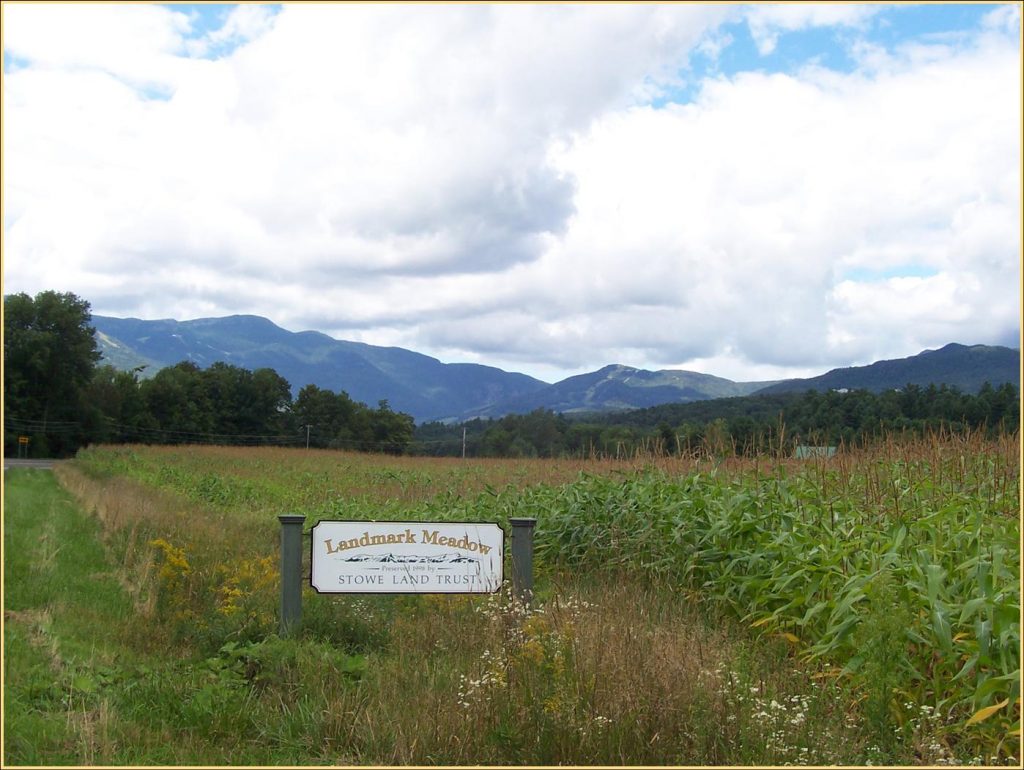Community overview
Stowe is one of New England’s premier resort communities. The self proclaimed “Ski Capital of the East” – with a year-round population of over 4,500 – attracts hundreds of thousands of tourists on a year-round basis. The Town’s popularity has resulted in several decades of sustained development pressure. In response, the Town has sought to manage growth and development in a manner that maintains the community’s small-town character while accommodating tourists and their expected amenities.
Tools you can use
The Town of Stowe has recognized the value of planning for many years, adopting the Town’s first master plan in 1964 and first zoning bylaws in 1971. Those bylaws called for concentrating development in and around Stowe Village and at major resort destinations, including Mount Mansfield. As was common practice at the time, the Town established a commercial corridor – the Highway Tourist District – along Route 108 (the “Mountain Road”) which links the Village with Stowe Ski Resort at the base of Mount Mansfield.
When the zoning was first established, only small scale commercial establishments and lodges were anticipated along the Mountain Road. The size of retail stores was capped at 1,500 square feet, and the nature of tourism at the time favored small country lodges. During the late 1980s, however, commercial development took-off, and loopholes in the zoning were found to allow leap-frogging strip development farther and farther from the Village. The Town adopted a new town plan, which included a goal of revising the Highway Tourist District to prevent continued strip development.

After several attempts, the Planning Commission put forward a plan that rezoned the Highway Tourist District by creating two “growth nodes” – areas where more intensive smart growth should occur, and reducing the number of commercial uses allowed in a new “Upper Mountain Road District” which encompassed the longest and least developed stretch of the highway.
Of special concern to the community was the preservation of remaining farm fields and open meadows along the Mountain Road. To address these areas, the Commission proposed a new “Meadowland Overlay District” that placed additional restrictions on what could be developed on these open meadows. To soften the potential financial impact on owners of land within the overlay district, a Transfer of Development Rights (TDR) program was created.
The TDR program allows owners of land within the Meadowland Overlay to sell development rights to landowners in the two growth nodes. Thus, the overlay serves as the sending area, creating a financial incentive for landowners to conserve their properties, and moves that development potential to areas targeted for growth. To date, at least one sale and transfer has occurred, and the Town is considering extending the program to other areas of Town.
Lessons Learned
- Stowe, like many communities, was not experiencing the type of development patterns envisioned when regulations were first adopted. By combining conventional zoning changes with innovative practices –including the TDR program – the Town was able to generate broad community support for the effort.
- When changing zoning that diminishes the expectations of landowners, there may be creative ways with which to reduce the impact on landowners.
- Development regulations are one of many tools available to protect scenic resources. In Stowe’s case, the efforts of the Stowe Land Trust have supported regulatory efforts by preserving key properties, including along the Mountain Road.
Related Issues
Related Tools




